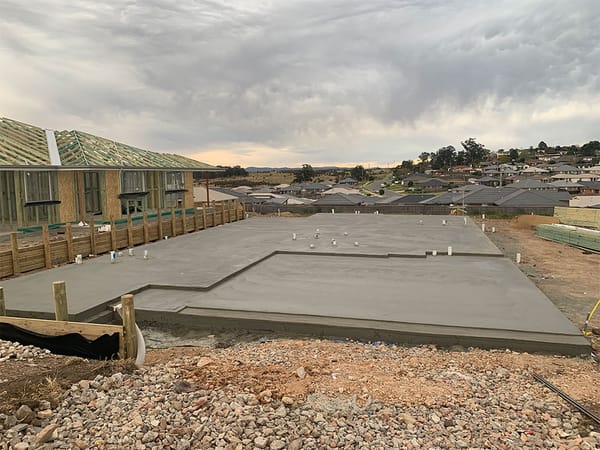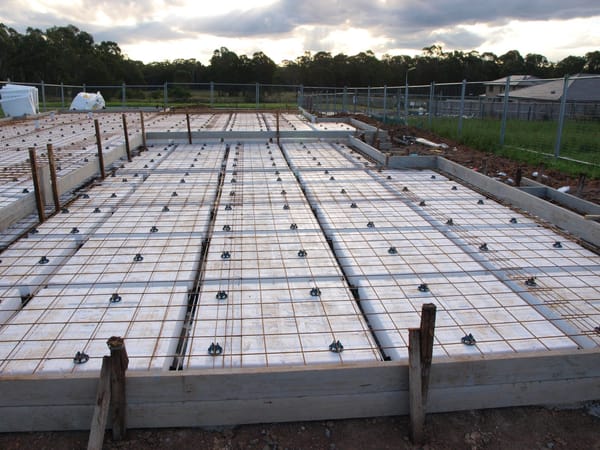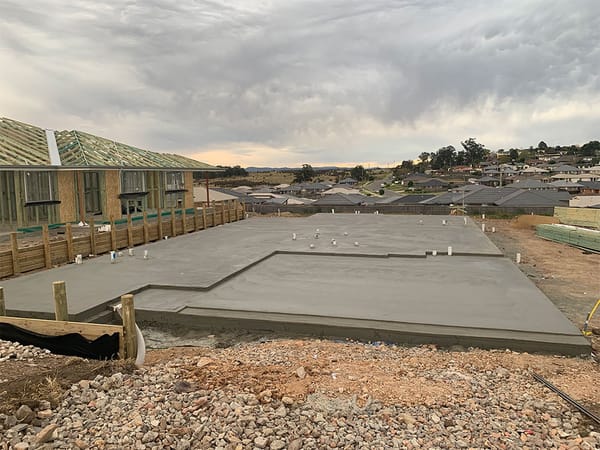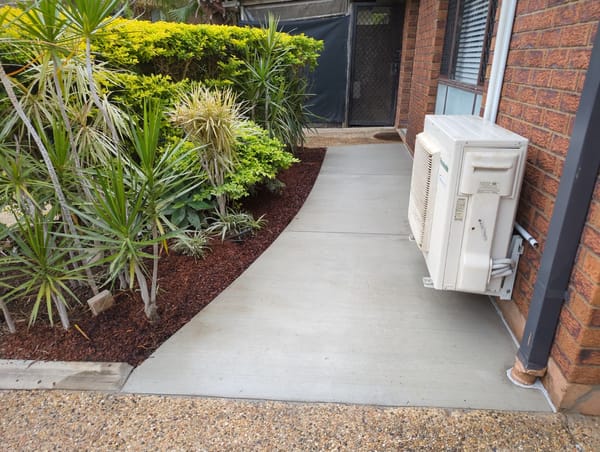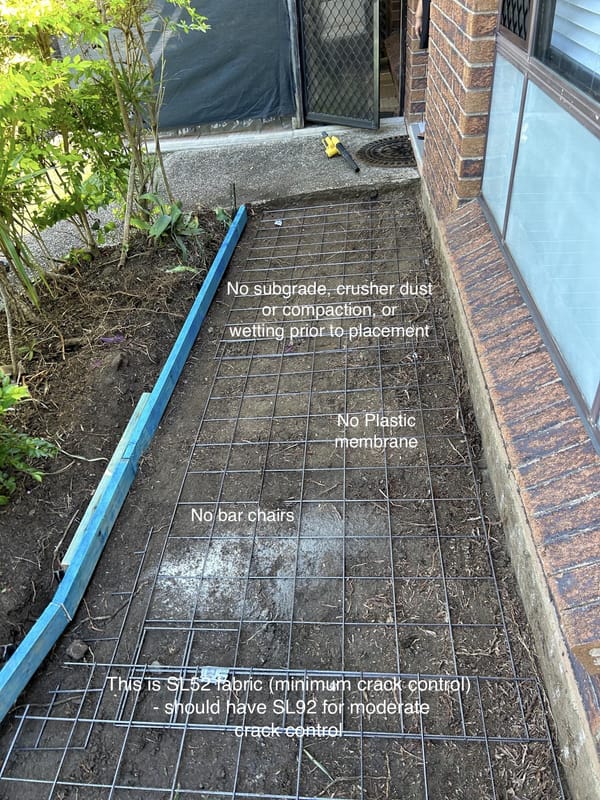As a home owner, you want your concrete surfaces to look immaculate and last for years without any signs of wear and tear. However, despite the durability of concrete, it's common to notice small cracks or patterns on its surface over time.
This phenomenon is called concrete crazing, and while it may seem alarming at first glance, it's actually quite common and can be easily prevented or repaired with the right knowledge.
In this post, we'll dive into what causes concrete crazing and how home owners can identify, prevent and fix this issue before it becomes a bigger problem. So buckle up and get ready to learn all about this fascinating topic!
Introduction to Concrete Crazing
Concrete crazing, also known as plastic shrinkage cracking, is a common issue that home owners need to be aware of. Crazing occurs when the surface of concrete begins to develop small cracks (figure a). Figure b shows concrete where the aggregate has not settled and in turn provides greater strength to the surface layer to resist pulling forces (drying forces - like a baked cake drying our too fast).
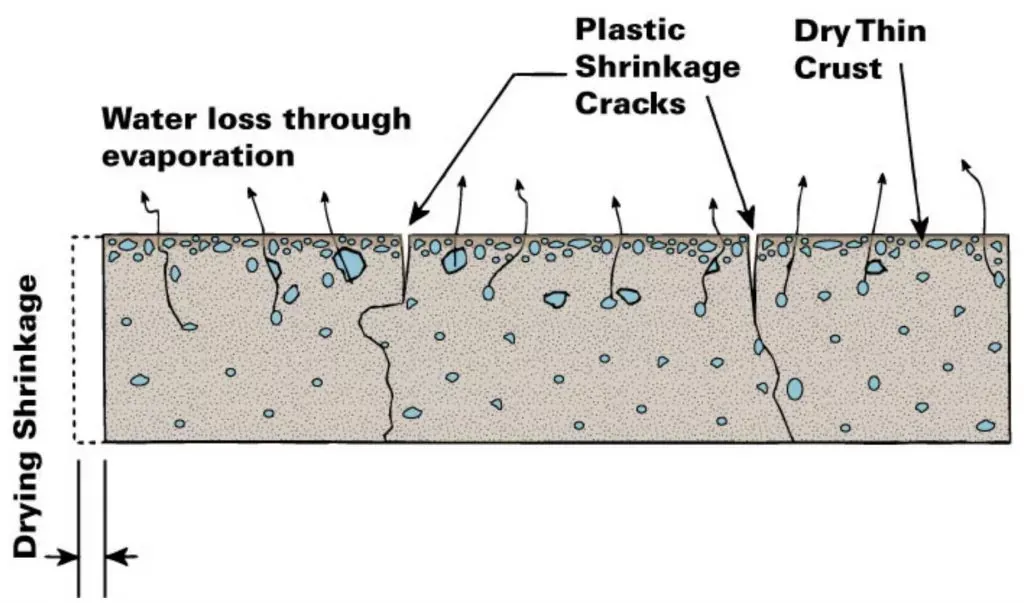
These cracks can be superficial and do not necessarily indicate a structural problem, but they can be unsightly and may worsen over time. Home owners should therefore take steps to understand what causes concrete crazing and how it can be prevented or repaired.
There are several reasons why concrete may start to craze. One common cause is improper curing, which can cause the surface of the concrete to dry too quickly. This can happen if the concrete is left exposed to direct sunlight or windy conditions.
Another possible cause is using too much water when mixing the concrete, which can make it more susceptible to cracking. Finally, certain types of aggregates (such as limestone) can also contribute to crazing.
Preventing concrete crazing is relatively straightforward: simply ensure that the concrete is properly cured and protected from extreme weather conditions during curing. If you do notice any cracks starting to form, you can repair them with a suitable filler material before they have a chance to spread further.
In most cases, however, repairing crazed concrete is purely cosmetic and will not affect the overall strength or durability of the material.
Causes of Concrete Crazing
There are a few primary causes of concrete crazing. First, if the concrete mix is too dry, it can lead to crazing. Second, if the concrete is not cured properly, it can also cause crazing. Finally, if the surface of the concrete is not sealed properly, water can get into the pores of the concrete and cause it to craze.
Effects of Concrete Crazing
When concrete crazing occurs, it can have a number of different effects on your home. Crazing can cause the concrete to become weak and brittle, which can lead to cracking and chipping. In addition, crazing can also cause the concrete to discolor and become stained. If left untreated, crazing can eventually lead to the complete breakdown of the concrete surface.
Prevention Strategies for Homeowners
Crazing is a common issue with concrete, but there are ways to prevent it. Homeowners can take some simple steps to help avoid concrete crazing.
One of the best ways to prevent concrete crazing is to make sure the surface is clean and free of dirt, dust, and other debris before applying any sealers or coatings. This will help create a smooth, even surface that is less likely to craze.
It's also important to use the right products when working with concrete. Make sure to use a quality sealer or coating designed for concrete surfaces. Applying too much sealer can also lead to crazing, so be sure to follow the manufacturer's instructions carefully.
If crazing does occur, it's important to address it as soon as possible. Crazed areas can be sanded down and resealed. In some cases, you may need to replace the affected area of concrete altogether.
Conventional methods for curing concrete
The most common methods of curing concrete include:
- Water curing: This is the most commonly used method of curing concrete. Water should be applied to the surface of the concrete to keep it moist during the curing process. This is often down using sprinklers, hose wetting or ponding water using sandbags around the slab perimeter. Water curing significantly helps reduce cracking caused by shrinkage.
- Membrane curing: In this method, a membrane is placed over the surface of the concrete and sealed with tape. The membrane acts as a barrier, trapping moisture in and preventing drying out due to evaporation. The membrane should remain in place for at least two days after pouring.
- Steam curing: Steam is applied directly to the surface of the concrete, providing moisture and heat during the curing process. This method is often used for large industrial projects where quick drying times are critical.
- Chemical curing: This method involves the application of a chemical curing compound to the surface of the concrete. The compound helps reduce water loss due to evaporation and speeds up the curing process.
Concrete should be cured for at least 28 days before it can be used, depending on the size and type of project. Proper curing is essential to ensure that concrete is strong and durable.
Repair Options for Existing Crazing
There are a few different ways to repair existing crazing in concrete. One option is to use a concrete sealer. This will help to fill in the cracks and prevent future crazing. Another option is to use a concrete patch. This will give the area a smooth finish and help to protect against further damage.
Pros and Cons of Different Repair Methods
When it comes to repairing concrete, there are several different methods available. Homeowners need to understand the pros and cons of each repair method in order to choose the best option for their needs.
One popular repair method is resurfacing. This involves applying a new layer of concrete over the existing concrete surface. Resurfacing can be used to cover up minor cracks and imperfections, as well as improve the overall appearance of the concrete. However, resurfacing will not address any structural issues with the concrete underneath.
Another common repair method is patching. This involves filling in holes or cracks in the concrete with a putty or patching compound. Patching can be used to repair both cosmetic and structural damage to concrete. However, it is important to note that patching compounds may not match the colour or texture of the surrounding concrete, so it is important to consider this before choosing this repair method.
Finally, some homeowners may choose to replace their entire concrete slab if it is severely damaged. This is usually only necessary if the damage is too extensive for resurfacing or patching. Replacing an entire concrete slab can be a costly and time-consuming project, so it should only be considered as a last resort.
Conclusion
Concrete crazing can be a common issue that homeowners encounter with their concrete surfaces. Thankfully, understanding the causes of this condition and how to prevent or fix it is easy. As long as homeowners keep up on regular maintenance, they should have no problem keeping their concrete surfaces looking great for years to come. With these tips in mind, you’ll be able to maintain beautiful and durable concrete surfaces at your home!



